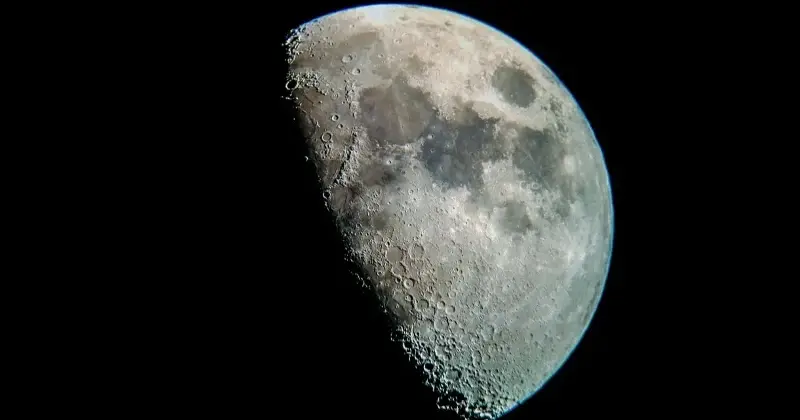New research shows that the Moon's core is a solid mass with a density close to iron, opening up new understanding of the history and evolution of the natural satellite.
A study published in May 2023 confirmed that the Moon's core is a solid mass with a density similar to iron.
This discovery is expected to end the decades-long debate about whether the Moon's core is solid or molten, and help scientists better understand the Moon's history.
However, this conclusion is still not convincing enough, new research continues to add evidence, expanding understanding of the core structure and the formation and decay process of the Moon's magnetic field.
Does the Moon have a solid core like the Earth?
According to Nature magazine, astronomer Arthur Briaud and colleagues said the new discovery forces scientists to look back at the formation and disappearance of the Moon's magnetic field.
At the same time, demonstrating that the Moon has a solid core and has undergone strong mantle upheavals helps to shed more light on the chaotic, collision-filled period of the first billion years of the Solar System.
The most effective way to study the internal structure of celestial bodies is to rely on seismic data. Sound waves from quakes on the Moon allow scientists to create detailed maps of the internal structure.
The seismic data collected by the Apollo missions were of low resolution, insufficient to determine the state of the Moon's inner core.
To solve this problem, the team synthesized data from space missions and laser-based lunar ranging experiments to build a detailed profile of the Moon's properties.

This image shows different instruments measuring the Moon's properties to find its core (Image: Géoazur/Nicolas Sarter).
From there, they simulated several different core models, comparing them with observational data to find the best fit.
The results showed that denser material inside the Moon fell toward the center, while less dense material floated to the top.
This phenomenon has long been proposed as an explanation for the presence of certain elements in the Moon's volcanic regions.
In addition, the research team discovered that the Moon's core is very similar to Earth's, consisting of a liquid outer layer and a solid inner core.
According to the model, the outer core has a radius of about 362 km, the inner core about 258 km, equivalent to 15% of the Moon's radius.

The inner core also has a density of about 7,822 kg/m3, which is similar to that of iron.
Scientists believe that the Moon once had a strong magnetic field, which began to weaken about 3.2 billion years ago.
The magnetic field is generated by motion and convection in the core, so the composition of the core is key to explaining why the magnetic field disappears.
With humanity preparing to return to the Moon in the near future, we may not have to wait too long for confirmation with direct seismic measurements.
